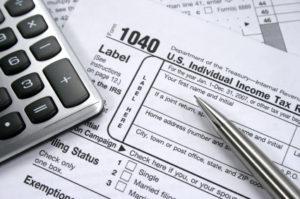 Shortly after the federal government enacted sweeping healthcare reform in 2010, there was considerable concern over a last-minute addition to the legislation: a 3.8 percent tax on investment income of upper-income households to help shore up Medicare. The tax takes effect in 2013.
Shortly after the federal government enacted sweeping healthcare reform in 2010, there was considerable concern over a last-minute addition to the legislation: a 3.8 percent tax on investment income of upper-income households to help shore up Medicare. The tax takes effect in 2013.
Among the concerns expressed by consumers and real estate professionals, both then and today, is that the tax amounts to a transfer tax on real estate. This is not true, according to NAR Director of Tax Policy Linda Goold.
“The biggest misconception about this tax is that it is a transfer tax on real estate. It is not,” says Goold.
Here’s how the tax works. For individuals earning $200,000 a year or more and married couples earning $250,000 a year or more, certain investment income above these levels might be subject to the 3.8 percent tax on a portion of that income. The income “might” be subject to the new tax because of many factors having to do with the kind and amount of the investment income the household receives.
Investment income includes capital gains, dividends, interest payments, and, for those who own rental property, net rental income.
Importantly, the $250,000 (for individuals) and $500,000 (for married couples) capital gain exclusion on the sale of a principal residence remains in place. So, if you’re a married household that sold a house for a $500,000 gain (that’s gain, not sale proceeds), that amount remains excluded from your income calculation.
Let’s take a look at a married couple that has $325,000 in adjusted gross income (AGI), plus $525,000 in capital gains from the sale of their house.
This household would be considered upper-income by most standards. Not only is their income relatively high, at $325,000 (AGI), but they’re receiving a $525,000 gain on their house sale. Presumably, they bought their house years ago and it’s appreciated over the years, so upon selling it, their gain is a relatively high $525,000.
For this household, only $25,000 in investment income would be subject to the 3.8 percent tax. That would amount to $950. That’s because it’s the $25,000 over the $500,000 capital gains exclusion that’s taxable.
Before they would know that, though, they would have to do a calculation that involves their adjusted gross income. They would have to add their capital gain of $25,000 to the amount of their income above the $250,000 income trigger (for married couples). Since their income is $325,000, they would add the $25,000 to $75,000 ($325,000 – $250,000), which would equal $100,000. Then they would compare the $25,000 to that $100,000, and apply the tax to the lesser of the two, which is the $25,000. Thus, $25,000 x 3.8% = $950.
So, you have a household that had income of $850,000 for the year, and its tax on investment equaled $950.
This is a simplification. Other tax issues could come into play. But it shows that the tax applies to just a portion of investment income for certain upper-income households and that the capital gains exclusion remains untouched.
Nobody likes taxes, and this tax was inserted into the legislation at the 11th hour as a “pay-for,” that is, as a revenue generator to help offset some of the costs of the reform. It’s expected to generate $325 billion over eight years.
NAR has prepared a brochure that looks at how the tax might apply under eight income scenarios: 1) sale of principal residence (which we just looked at), 2) sale of a non-real estate asset, 3) gain, interest, and dividend from securities, 4) real estate investment income, 5) rental income as sole source of earnings, 6) sale of second home with no rental use, 7) sale of inherited investment property, and 8. purchase and sale of investment property.
You can download the brochure for free HERE. It’s written in plain language and you should find it organized efficiently, so you can see at a glance the potential considerations for the different scenarios. Of course, it’s just guidance: each household’s situation will be different, so you would want to suggest to your customers and clients that they consult with a tax advisor to make sure the tax is applied correctly in their case.

